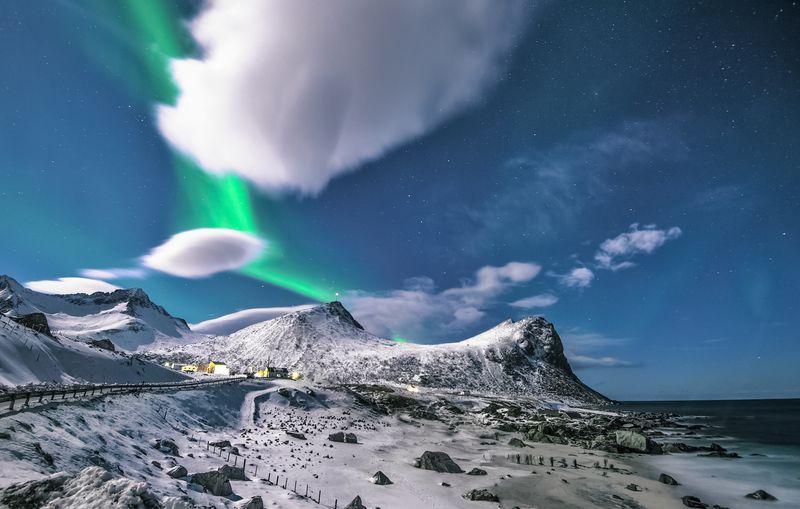Powerful Hurricane Jova Emerges in the Pacific
In the Pacific Ocean, the Northern Hemisphere’s most powerful hurricane of 2023 has taken shape. Named Hurricane Jova, this ferocious Category 5 storm formed in less than 48 hours. However, there is some good news: Jova is not heading towards any coastlines. Meteorologists have been commenting on the extraordinary intensification of Jova, sharing satellite images and videos of the storm. The Weather Channel’s senior meteorologist, Jonathan Erdman, posted a video on X (formerly known as Twitter), showing Jova’s transformation from a tropical depression to a Category 5 hurricane in just over 48 hours. Erdman also mentioned that Jova is the first Category 5 hurricane in the eastern Pacific in almost five years.
Speedy Intensification and Potential Impacts
The National Weather Service San Diego has reported that Jova is the fastest-intensifying hurricane in the eastern Pacific since 2015’s Hurricane Patricia. It grew from a Category 1 to a Category 5 hurricane in about 18 hours. Jova formed from an area of low pressure off the western coast of Mexico and is currently packing sustained winds of at least 157 mph (252 kph).
Fortunately, Jova’s path is not posing an immediate threat to any inhabited areas, as it is moving in a northwestern direction. However, its presence will bring rough surf and rip currents to the coast of Mexico and Southern California.
The Threat of Hurricane Lee
While Jova’s path is relatively harmless, Hurricane Lee has emerged in the eastern Caribbean Sea and is potentially more devastating. Forecasters predict that Lee may grow into a Category 5 hurricane by the weekend and could impact multiple communities, including Anguilla, Antigua, Bermuda, Bahamas, Puerto Rico, and the British and U.S. Virgin Islands.
The Atlantic Hurricane Season
The Atlantic hurricane season is set to peak on September 10th and has so far produced two major hurricanes: Franklin and Idalia. Both reached peak intensities as Category 4 storms. The presence of Hurricane Lee adds to the challenges faced by communities already coping with the impacts of these storms.
Climate Change and the Increasing Frequency of Powerful Storms
The emergence of Hurricane Jova and the threat posed by Hurricane Lee are stark reminders of the increasing frequency and intensity of storms in our changing climate. As the Earth continues to warm, it fuels the conditions that give rise to these powerful storms. The warmer the oceans become, the more energy they can transfer to developing storms, leading to rapid intensification.
Climate scientists have been warning of the “points of no return,” where climate change becomes irreversible and the impacts grow even more severe. The occurrence of extreme weather events, such as hurricanes, is one of the key signatures of climate change. As we observe the formation and intensification of storms like Jova and Lee, it is crucial to heed these warnings and take meaningful action to mitigate the effects of climate change.
Addressing climate change requires a global effort. Governments, businesses, and individuals all have a role to play in reducing greenhouse gas emissions, transitioning to clean energy sources, and implementing sustainable practices. Additionally, investing in resilient infrastructure and disaster preparedness can help communities better withstand the impacts of powerful storms.
Preparedness and Resilience
For the coastal communities potentially in the path of Hurricane Lee, it is essential to prioritize preparedness and resilience. Evacuation plans should be in place, and emergency services should be prepared to respond swiftly and effectively. Individuals should heed the advice of local authorities, secure their homes, and gather essential supplies.
Furthermore, in the aftermath of storms, communities must have adequate support systems in place to recover and rebuild. This includes access to clean water, healthcare facilities, and assistance with housing. Investing in resilient infrastructure, such as storm surge barriers and flood defenses, can also help minimize the impacts of future storms.
Conclusion
The emergence of Hurricane Jova and the threat posed by Hurricane Lee serve as reminders of the ongoing challenges posed by powerful storms in our changing climate. As we witness the rapid intensification and increasing frequency of these storms, it is imperative to take action to address climate change and build resilience in vulnerable communities.
By implementing sustainable practices, reducing greenhouse gas emissions, and investing in preparedness and resilience measures, we can work towards a safer and more sustainable future. The time to act is now, as the impacts of climate change continue to unfold.

<< photo by stein egil liland >>
The image is for illustrative purposes only and does not depict the actual situation.
You might want to read !
- Hurricane Jova Weakens to Category 4: Analyzing its Strength and Trajectory
- “A Devastating Force: Assessing the Aftermath of Deadly Storms in Las Vegas”
- “The Unstoppable Force: Jim Cantore’s Florida Hurricane Chronicles”
- “Battling Nature’s Fury: Jim Cantore’s Epic Encounter with Hurricane Idalia in Cedar Key, Florida”
- Tracking Tropical Storm Lee: Projected Path and Maps
- Tracking Tropical Storm Lee: Projected Path and Maps Unveiled




